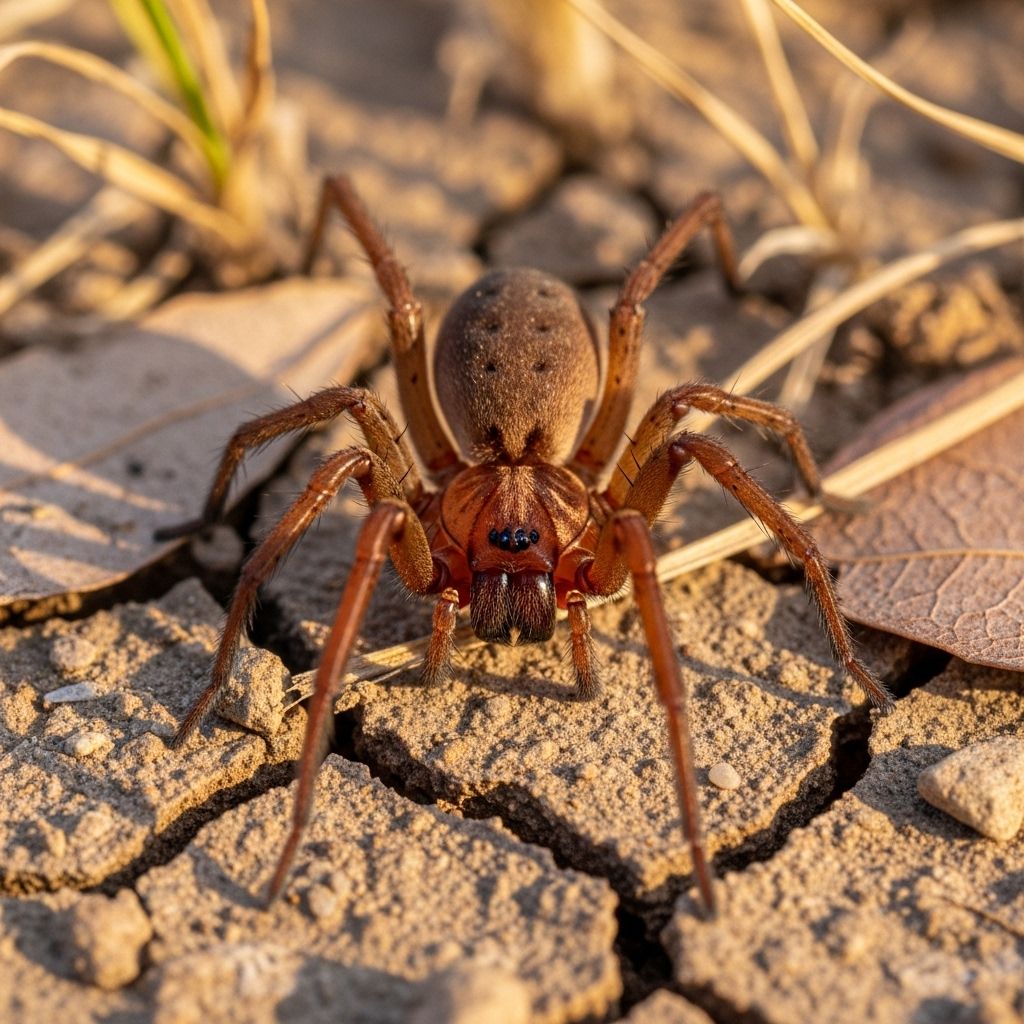The Mediterranean Recluse Spider: Identification, Habitat, and Public Health Insights
Gain peace of mind by learning to recognize and deter these secretive home invaders.

The Mediterranean recluse spider (Loxosceles rufescens) has gained international attention due to its expanding presence in homes, urban spaces, and even institutional buildings worldwide. While closely related to the infamous brown recluse spider, the Mediterranean species presents unique biological and ecological characteristics. This article offers an in-depth look at its appearance, habits, health implications, and the realities versus myths of its danger to humans.
Table of Contents
- Origin and Global Distribution
- Identification and Physical Features
- Typical Habitats and Human Encounters
- Behavior, Diet, and Lifecycle
- Venom, Bites, and Health Concerns
- Prevention, Control, and Safety Tips
- Frequently Asked Questions
Origin and Global Distribution
Loxosceles rufescens is originally native to the Mediterranean region and the Middle East. Over the past century, global trade and travel have dramatically expanded its range:
- Now found on multiple continents, including throughout Europe, North Africa, western Asia, parts of India, Japan, Australia, several Atlantic and Pacific islands, and at least 22 states in the United States as well as parts of Canada.
- Considered one of the most invasive spider species due to its adaptability and ability to stow away in shipments and personal belongings.
- Its reported spread has been noted in a diverse array of climates, mainly where human habitation provides suitable dark, dry shelters.
Notably, institutions such as the University of Michigan have experienced building closures due to the discovery of Mediterranean recluse spiders in basements and utility spaces, illustrating their adaptability to human environments.
Identification and Physical Features
Despite often being confused with other species, particularly the brown recluse, the Mediterranean recluse has distinct features:
- Size: Approximately 7–7.5 mm long (body only), with leg span about the size of a U.S. quarter.
- Shape: Small body with proportionally long, slender legs.
- Color: Typically light brown or tan.
- Eye arrangement: Six eyes in three pairs forming a triangular arrangement (most spiders have eight eyes).
- Unique marking: Faint violin-shaped pattern on the cephalothorax (fused head and thorax), although this marking tends to be subtler than on the brown recluse.
| Feature | Mediterranean Recluse (L. rufescens) | Brown Recluse (L. reclusa) |
|---|---|---|
| Native Region | Mediterranean/Middle East | Central/Southern USA |
| Markings | Subtle violin shape | Pronounced violin shape |
| Eye Count | 6, triangular | 6, triangular |
| Body Size | 7–7.5 mm | 6–20 mm |
Typical Habitats and Human Encounters
The Mediterranean recluse spider is highly adaptable and prefers locations that are dark, dry, and undisturbed:
- Favors basements, cellars, tunnels, crawl spaces, storerooms, and false ceilings in human dwellings.
- Common in cracks, stone walls, crevices, behind furniture, woodpiles, sheds, and under loose bark outdoors.
- Often found in medieval towns and countryside homes with old stone architecture.
- Cave-dwelling by nature, but urban environments offer suitable equivalents due to their consistent climate and prey availability.
- Rarely encountered, even when numerous—often requiring active monitoring or trapping to detect large infestations.
Human contact is uncommon. The spiders are shy, primarily nocturnal, and actively avoid open, busy spaces.
Behavior, Diet, and Lifecycle
The Mediterranean recluse spider exhibits several notable behavioral and reproductive features:
- Nocturnal hunting: Emerges at night to actively pursue prey, usually small arthropods such as silverfish and cockroaches.
- Web use: Spins a delicate, irregular web as a daytime retreat and to shelter egg sacs, not for active prey capture.
- Egg sacs: Each contains about 40 eggs. Depending on temperature, eggs hatch within weeks.
- Growth: Spiderlings molt several times, each time emerging pale and ghost-like.
- Lifespan: Typically ranges from one to three years under favorable conditions.
Males are more likely to roam in search of mates, leading to a greater risk of accidental encounters with people late at night or during the early morning hours.
Venom, Bites, and Health Concerns
Like other Loxosceles species, the Mediterranean recluse possesses venom containing the enzyme sphingomyelinase D, which can cause necrotic skin reactions:
- Bites are rare and usually occur when the spider is trapped against the skin—such as inside clothing or shoes.
- Initial bite may go unnoticed or resemble a mild local irritation.
- In more severe cases, necrosis (skin breakdown) or systemic symptoms can develop. Serious outcomes are uncommon and generally linked to individual sensitivities (children, elderly, immunocompromised).
- Most bites in heavily infested locations do not result in notable symptoms; actual cases of medically significant loxoscelism are rare, even in homes with established populations.
The fear of recluse spider bites is often disproportionate to the medically verified risk.
What Does a Mediterranean Recluse Bite Look Like?
The range of bite reactions varies considerably:
- Mild case: Red, itchy bump or minor swelling, usually resolves without treatment.
- Moderate case: Local blistering, tissue inflammation or discomfort, minor ulcer.
- Rare/severe case: Expanding ulcer, necrosis, fever, malaise—requires medical evaluation.
If a bite is suspected and symptoms worsen or do not resolve, consult a healthcare professional.
Prevention, Control, and Safety Tips
While their presence can be unsettling, Mediterranean recluse spiders are neither aggressive nor prone to wandering into high-traffic spaces. Effective strategies include:
- Seal cracks and crevices in walls, baseboards, and around windows and doors.
- Reduce clutter in basements, closets, and other seldom-disturbed areas.
- Shake out shoes, clothing, and bedding that have been left undisturbed for days.
- Store items in tightly closed plastic containers, especially in infested areas.
- Monitor and remove webs and spider egg sacs when observed.
- Use sticky traps in areas where spiders are suspected or confirmed.
- Consider professional pest control if an infestation is suspected, particularly in large public or commercial buildings.
Chemical treatments may be useful in severe infestations but should be implemented by knowledgeable pest control professionals familiar with Loxosceles biology.
How to Distinguish Mediterranean Recluse From Other Spiders
- Eye pattern: The best diagnostic feature. Look for six eyes in three pairs forming a triangle, unlike most spiders with eight eyes.
- Body shape and markings: Careful attention to the violin-shaped marking (though not always easily visible) can help.
- Habitat: If found in a dry, undisturbed indoor area—especially with evidence of delicate, irregular webs and pale, molted skins—consult an entomologist for identification if unsure.
Frequently Asked Questions (FAQs)
Q: Are Mediterranean recluse spiders deadly to humans?
A: Documented fatalities from Mediterranean recluse spider bites are extremely rare. Most bites cause minor or no symptoms, and severe loxoscelism is uncommonly reported even in high-infestation settings.
Q: Why are these spiders showing up in homes and public buildings?
A: Mediterranean recluse spiders are excellent at hiding and often hitchhike in goods, luggage, or furniture. Buildings with stone walls, old wood, crawl spaces, and limited light provide ideal microhabitats for them.
Q: What should I do if I find one?
A: Safely contain the spider for identification if possible. Inspect and clean the area. Take measures to seal cracks and minimize clutter. Contact a pest control professional for further assessment in case of suspected infestation.
Q: How do I know if I’ve been bitten and what should I do?
A: Many bites go unnoticed or are mistaken for minor skin irritations. If you develop a bite that worsens, ulcerates, or is associated with systemic symptoms (like fever or malaise), consult a medical professional immediately. Bring the spider if available for accurate identification.
Q: Are Mediterranean recluse spiders aggressive?
A: No. They are highly reclusive and bite humans only when directly threatened or pressed against skin (such as in shoes or clothing).
Key Takeaways
- The Mediterranean recluse spider is globally widespread but rarely seen even in areas where it is common.
- Identification is best based on eye pattern and subtle violin-shaped cephalothorax markings.
- Bite risk is low and significant medical effects are rare.
- Careful hygiene, pest exclusion, and professional monitoring in sensitive cases provide effective control.
Awareness, not alarm, is the best response to the discovery of this secretive arachnid in human spaces.
References
- https://animalia.bio/mediterranean-recluse-spider
- https://www.prevention.com/life/a35632653/mediterranean-recluse-spider/
- https://www.lsuagcenter.com/articles/page1553875834499
- https://bioone.org/journals/arachnology/volume-18/issue-8/arac.2021.18.8.814/Synanthropic-habitats-of-the-Mediterranean-recluse-spider-Loxosceles-rufescens-Araneae/10.13156/arac.2021.18.8.814.short
- https://ipm.ucanr.edu/pmg/pestnotes/pn7468.html
- https://extension.psu.edu/brown-recluse-spiders/
- https://pmc.ncbi.nlm.nih.gov/articles/PMC5629298/
- https://bugoftheweek.com/blog/2013/1/6/capitol-spiders-mediterranean-recluse-loxosceles-rufescens
- https://edis.ifas.ufl.edu/publication/IN576
Read full bio of medha deb











